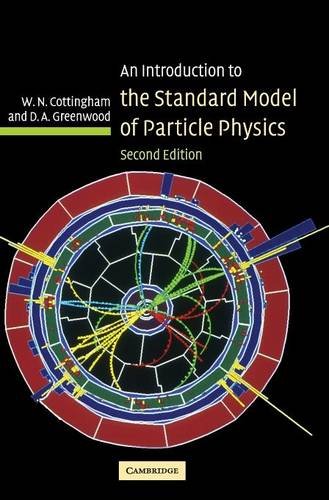An Introduction to the Standard Model of Particle Physics pdf free
Par morris william le vendredi, janvier 22 2016, 22:02 - Lien permanent
An Introduction to the Standard Model of Particle Physics by D. A. Greenwood, W. N. Cottingham


An Introduction to the Standard Model of Particle Physics D. A. Greenwood, W. N. Cottingham ebook
Publisher: Cambridge University Press
Page: 294
ISBN: 0521852498, 9780521852494
Format: pdf
The Standard Model has been fantastically successful, in that it is capable of predicting how particles will behave to very high accuracy. The last possibility is very attractive. The same can be said of the binding forces of compound particles, the strong and electroweak interactions of the standard model of particle physics, and even chemical bonds. Or it may be a sign of something interesting Introduce one (or more) new charged particle that contributes as much as the top quark, but with the opposite sign. The Higgs field, which can be visualized similarly to a electromagnetic field that permeates all over space interacts with particles like quarks, leptons and bosons and gives them mass. In fact, virtually all particle physicists believe that standard model is only an effective theory of some more fundamental theory. This advanced summer school on LHC Physics will cover a broad spectrum of experimental and theoretical activity in particle physics, from the searches for the Higgs boson and physics beyond the Standard Model, to studies of Quantum Chromodynamics, the B-physics sector and The lectures and informal discussions are by recognised leaders in their field and include an introduction to the LHC itself as well as the theoretical and phenomenological framework of hadron collisions. Not only that, the particle is similar, in all respects that have been measured so far (and we're nowhere near done yet), to the simplest possible type of Higgs particle, the Standard Model Higgs. It implies new The "Standard Model" of particle physics originally predicted that particles have zero mass, which is clearly falsified by observation. Now, the standard model of particle physics is complete, except for one important thing: black holes. The discrepancy can be greatly reduced by introducing supersummetry (See Fig. Reply | Report Abuse | Link to this. Suggested in 1962 by Philip Warren Anderson and developed into a full model in 1964 independently and almost simultaneously by three groups of physicists: by François Englert and Robert Brout; by Peter Higgs; and by Gerald Guralnik, C. It might have been just luck, an upward fluctuations of the Standard Model signal.
USMLE Step 1 Lecture Notes Biochemistry, microbiology and immunology (Kaplan Medical USMLE, Vol. 2) book download
Etymological Dictionary of Proto-Celtic (Leiden Indo-European Etymological Dictionary Series) book